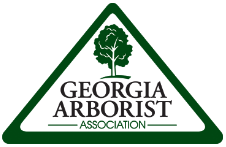Protecting Atlanta Trees from Ambrosia Beetles
Protecting Atlanta Trees from Ambrosia Beetles
Written By Joel Twist, ISA Certified Arborist™, The Davey Tree Expert Company – Atlanta, GA
As summer blankets Atlanta with warm weather and vibrant greenery, it's also the time when one of the Southeast’s most damaging tree pests quietly emerges: the ambrosia beetle.
These invasive insects are a growing concern for homeowners and property managers across metro Atlanta, as they can damage or even kill trees—often with little warning.
What are Ambrosia Beetles?
Tiny but tenacious, Ambrosia beetles bore into trees and introduce a harmful fungus that disrupts the tree’s internal transport system. As a result, trees can wilt, decline rapidly, and even die—sometimes within weeks of infestation. Stressed trees are most susceptible and once trees are infested there is little that can be done, making early detection and proactive care critical.
Understanding the Lifecycle
Ambrosia beetles overwinter as adults and become active as temperatures rise in spring. They tunnel into trees to create galleries, where they introduce ambrosia fungus—their food source. The fungus, not the beetles directly, causes the most damage by blocking the tree’s ability to transport water and nutrients.
Signs of Ambrosia Beetle Infestation in Atlanta Trees
Keep an eye out for these symptoms—especially in spring and early summer:
Toothpick-like frass tubes (sawdust pushed out from tiny entry holes)
Small, round bore holes in the trunk or branches
Sudden leaf wilting or discoloration, even on healthy trees
Branch dieback, often beginning at the crown
Sap or gumming at entry points on the bark
Trees frequently affected in Georgia include crape myrtles, redbuds, dogwoods, oaks, tulip poplars, and Japanese maples.
What You Can Do to Protect Your Trees from Ambrosia Beetles
Ambrosia beetles are difficult to detect early, which makes proactive care and prompt response essential. These pests are particularly active during warm, humid months—typically from early spring through late summer—so staying vigilant during this time is key.
Atlanta Homeowners: How to Reduce Your Risk
While there’s no guaranteed way to prevent an ambrosia beetle infestation, there are several practical steps you can take to reduce the risk:
Minimize Stress on Trees
Water during dry periods
Mulch properly (keep mulch away from the trunk)
Avoid over-pruning
Protect root zones during construction or landscaping
Monitor for Early Warning Signs
Remove and Dispose of Heavily Infested Trees
When to Consult a Professional
If you suspect your trees are under attack or are noticing any of the signs listed above, we highly recommend reaching out to a local ISA Certified Arborist™ for a consultation. A professional can assess the extent of the damage and determine whether treatment, removal, or monitoring is the best course of action.



